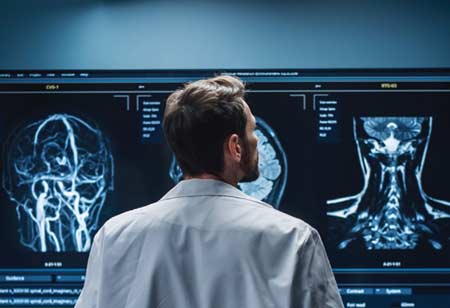Thank you for Subscribing to Healthcare Business Review Weekly Brief

Optimizing Healthcare through Technology: A Path to Improved Patient Adherence, Compliance, and Outcomes
Healthcare Business Review
With the ongoing evolution of the healthcare landscape, the integration of digital tools and technologies has become increasingly critical for patients, physicians, and healthcare leaders in achieving a personalized and digitized future. While telemedicine often tops physicians’ lists as the most important technological advancement, patients have a very different perspective. In the latest installment of our global, multi-year ‘Beyond Intervention’ research series, we discovered that most patients find technology helpful in managing their health condition, while physicians and healthcare leaders exhibited a more cautious approach.
As health and wellness tools proliferate, healthcare leaders and physicians who embrace such monitoring devices and digital tools have an opportunity to improve patient outcomes. These tools can offer the means to monitor the full spectrum of disease states, from simple step counts to more sophisticated arrhythmia, blood pressure, and blood glucose surveillance. However, maximizing outcomes requires buy-in from all stakeholders to bridge the gap in adoption, and although two-thirds of surveyed patients are comfortable sharing their data, fewer than a quarter of physicians are prepared to use digital health solutions for monitoring and ensuring compliance. To unlock the full potential of digital tools and technologies, collaboration between all parties is necessary to drive meaningful change.
“Through The Integration Of Technology Into Patient Care, Physicians Can Empower Patients To Be Actively Involved In Their Treatment Decisions, Enhancing Cohesion And Satisfaction”
Diverging Viewpoints
One of the starkest differences in opinion between patients, physicians, and healthcare leaders found in this year’s Beyond Intervention research is in the ranking of the top technologies: patients chose remote blood pressure monitoring, which appeared at the bottom of both physician and healthcare leaders ‘ leaders’priorities. Patients ranked wearable technologies second, yet these didn’t even land on either physicians’ or healthcare leaders’ top three lists. Conversely, physicians and healthcare leaders felt that an emergency call button was a high-priority technology, while patients didn’t rank this at all.
In prioritizing technologies that provide real-time, granular data on recovery, progress, and adherence, patients reaffirm their interest and insight into a truly personalized approach to care and self-monitoring. While we are all justifiably obsessed with the volume of data that we can acquire to drive analytic functions and power predictive algorithms, let’s consider another equally important aspect of remote patient monitoring and wearables: the potential to alter behaviors. With the insights from their own monitoring, patients are empowered to participate in their care and transform behaviors and lifestyle choices related to improved health outcomes.
In terms of data sharing, our survey has revealed that the majority of patients are comfortable (or even keen) to share data from monitoring devices with their physicians, with the aim of improving their own care and that of others. However, the value of sharing data is not embraced by the physician community, with only a little over a third of doctors reporting that such data would help deliver better care – although this attitude itself may betray post-pandemic physician burnout, workforce shortages, and health system financial strain, resulting in a paucity of time to review, assess, and utilize data from patients’ consumer technologies. This is where machine learning and artificial intelligence (AI) come into play.
Harnessing The Power Of AI
The impact of AI technologies is already evident in the healthcare sector, especially in the realms of automated image and signal analysis (radiology, ECGs, etc.). Around two-thirds of patients and half of all healthcare leaders said that they would not only trust AI to make the correct diagnosis but also to recommend the best treatment plan; perhaps less persuaded by the technology, most physicians do not feel the same way: only a third would put their trust in the AI.
As innovators within healthcare continue to build on, expand, and optimize the datasets that AI is trained upon, we can envision a world in which such technology may be able to analyze and assess the high volumes of consumer health data and deliver comprehensive and valuable highlights to physicians – simultaneously reducing the burden on healthcare providers while offering actionable insights. Therefore, when evaluating health technology solutions designed to complement the care administered by physicians, healthcare leaders might consider the adoption of digital and data analytic tools that are time-efficient and effective for both the patient and the physician and that can be integrated and operationalized within existing health and electronic patient record system infrastructures.
Through the integration of technology into patient care, physicians can empower patients to be actively involved in their treatment decisions, enhancing cohesion and satisfaction. Smart consumer devices, in turn, facilitate patient-centric healthcare, improving engagement and empowerment. In the ever-evolving landscape of healthcare, embracing technology as an integral part of the care process is paramount, and by bridging the divide between patients, physicians, and healthcare leaders, we can all strive for a future where healthcare and consumer technologies merge seamlessly, resulting in improved health outcomes.









